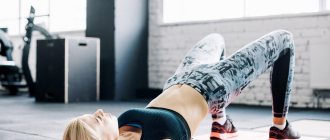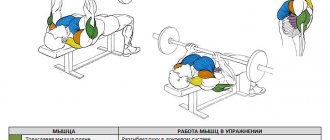The serious consequences of sedentary work
According to researchers, the body of people leading a sedentary lifestyle ages 5-10 years earlier. Sedentary work leads to poor posture, excess weight gain, poor vision and a number of other diseases.
The spine is the first to suffer. Indeed, more than 80% of office workers experience unpleasant back pain. Doctors have recognized that the lack of physical activity and sedentary work are the main causes of osteochondrosis. Our spine is a massive and large bone. When working at a computer or documents, it is usually in an awkwardly compressed and twisted position. This leads to the formation of small cracks and destruction in the cartilage, which lead to a decrease in the cartilage itself. Osteochondrosis can cause many complications: radiculitis, kyphosis, disc protrusion, etc.
Most office workers suffer from cardiovascular diseases. The same type of posture throughout the day leads to disruption of blood supply to the brain. This contributes to headaches, increased fatigue, memory loss, and blood pressure problems. Heart rhythm disturbances and heart pain may also develop.
Israeli scientists have found that office workers are susceptible to rapid weight gain. It turns out that sitting on a chair increases pressure on the lower body, which leads to excessive accumulation of fat. In people leading an active lifestyle, blood pressure, which leads to obesity, is 50% lower.
Sedentary work is the main cause of severe weakness, muscle pain, diabetes, constipation and hemorrhoids. Working with a computer has a negative impact on your eyesight. “Office syndrome” occurs, the signs of which are redness of the eyes, a feeling of sand in the eyes, and dryness. Despite the risks associated with a sedentary lifestyle, office workers, cashiers, operators and freelancers continue to work.
Simple Strengthening Exercises
How to avoid diseases that come from sedentary work? Exercises and physical exercises will help restore the necessary activity to the spine and muscles. These exercises can be roughly divided into two groups: the first is a set of exercises that must be performed directly in the office, the second is exercises that should be done at home at a time convenient for you. It is best, of course, to start the morning with exercise. Morning exercises do not have to be long; 5 minutes is enough for the spine and muscles to wake up too.
Exercise one: learning to sit correctly
The main mistake of people who lead a sedentary lifestyle is incorrect posture. First you need to learn to control yourself while working. The back should be straight and not slouched. Neither the torso nor the head should be tilted forward. It is necessary to ensure that the stomach is slightly tense and the chin is parallel to the floor. The lower back should rest on the back of the chair, and the upper back should be supported by its own muscles. You can't fall over on one side, because... this leads to the formation of s-shaped scoliosis. Relying on one hand (for example, on the one that is free from a computer mouse) also leads to poor posture, which leads to the occurrence of diseases. The cross-legged position disrupts posture, developing problems in the lumbar spine. The correct position is one in which the legs are placed together. It is advisable to use a stand so that the level of your knees is higher than your hips.
But even if you learn to sit correctly throughout the day, you will most likely still experience back discomfort. Physical exercise will help get rid of it. So, what exercises can you do at your workplace? For office exercises you need a few minutes; all exercises need to be repeated 5-10 times, depending on the time you have and the level of discomfort. Exercises during sedentary work must be done for all parts of the spine and muscle groups. It is best to start from the cervical region.
Neck exercises for sedentary work
- In a sitting position, bend your neck, bringing your chin as close to your chest as possible, then slowly tilt your head back, trying to look behind your back. Extension of the neck must be done while inhaling, and flexion while inhaling. Repeat 5 times.
- Turn your head to the left, fix it in this position, and then turn to the right. Repeat 5-10 times.
- In a sitting position, “draw” the numbers from 0 to 9 with your nose in the air, drawing all the elements. The range of motion of the neck should be full.
- Gently rotate your head 2-3 times, first clockwise, then in the opposite direction. This exercise not only strengthens the neck muscles and forces the vertebrae to work, but also trains the vestibular apparatus.
- Grasp the back of your head with your hands and fold them into a lock. Press them on the back of your head, and at the same time lower your head back, offering resistance. This exercise develops the neck muscles well.
Charging and “discharging” for the hands
- Grab your left hand by the wrist with your right, rotate the hand 5 times clockwise, and the same number of times in the opposite direction. Repeat this exercise for your right hand.
- Quickly clench the fingers of both hands into fists 10 times. On the 10th count, clench your fists as hard as you can, hold them clenched for 3-5 seconds, then relax your fingers and shake them as if shaking off drops of water.
Warm-up of the thoracic and lumbar spine
- This exercise should be done while sitting on a chair with a low back. Hands rest on the back of the head, clasping each other (lock). You need to bend back so that the back of the chair rests on your back. As you inhale, bend back, and as you exhale, bend forward. The exercise is repeated 4 times.
- Starting position: sitting on a chair with a straight back, legs slightly apart. You need to raise your hands up, clasp your left wrist with your right hand. Then lean to the right, pulling the left one. In this case, the tension of all muscles on the left side should be felt. After this, change the position of your hands and the side of the tilt. Repeat 5-10 times in each direction.
- Exercise “scissors” in the horizontal plane 5-10 times. When you inhale, your arms are brought together near your body, and when you exhale, they are moved to the side.
- Sit in the middle of a chair with your feet slightly apart. Grasp the right edge of the seat with your right hand. Place your left hand on the outer part of your right thigh. Stretch a little, turning your body to the right. Maintain this position for a few seconds, feeling the tension in your back muscles. Return to the starting position, relax and repeat the exercise, changing your hand and side of rotation.
- Starting position: sitting on a chair, hands on shoulders. It is necessary to make circular rotations with your arms, first forward, then backward. Repeat 10 times.
Abdominal training
- Pull your stomach in, count to 5, return to the starting position. Repeat 10 times. Over time, it is desirable to increase the counting time to 10, and the number of repetitions of the exercises to 20. By the way, this exercise can be done not only at home or in the office, but also on the way to work: on the bus, in the subway, etc., because in appearance Physical muscle tension is practically invisible.
- You need to tense your abdominal muscles, counting to 5. Over time, as in the first exercise, you can increase the load.
What is Venus syndrome?
Sedentary work often causes Venus syndrome. This is a decrease in muscle elasticity in the waist and hips, the formation of fat pads. A specially designed set of physical exercises will help cope with this deficiency. You need to repeat it 3-4 times a week.
- Sit on the floor, straighten your left leg while bending your right leg. Grab your left foot with your hands, lift it up and down. Try not to bend your leg at the knee. Repeat 10 times for each leg. At first this exercise is difficult to perform, but after time the muscles become elastic and stretching appears.
- Starting position: standing straight with crossed legs. It is necessary to stretch your arms forward, slowly bending your torso forward. Hold in this position for 5 seconds and return to the starting position.
- Starting position: kneel with your arms crossed above your head. You need to sit on your right thigh, straighten up and sit on your left. The exercise is repeated 10 times on each leg.
- It is necessary to take a position in which your feet are parallel, and the distance between them is approximately 2 shoulder widths. The back is straight and should not be bent under any circumstances. The thighs are at an angle (ideally parallel to the floor), and the shins are perpendicular to the floor. In Japan, this stance is called the “rider stance.” To strengthen your hips, you need to stand in this stance for as long as possible; in addition, squats in the “rider’s stance” show good results. The main detail to remember is the correct position of the feet. The feet should be parallel to each other at a great distance, legs bent at the knees.
Amazing leg gymnastics
- Starting position: sitting on a chair, heels and toes together. It is necessary to lift your toes off the floor one by one, while keeping your heels in a stationary position. Repeat 10 times for each leg.
- This exercise is similar to the one described above. You just need to lift your heels off the floor, and your toes should remain motionless. Repeat 10 times.
- Sitting on a chair, extend your right leg forward, tighten your calves, pulling your toes towards you. Change your leg. Repeat the exercise 10 times.
- Give your gluteal muscles a workout. Tighten them, count to 3-5, then relax. Tighten your muscles a second time and count 5-7. Repeat the exercise 10 times. You can gradually increase the number of exercises and the time of tension.
It is known that sedentary work disrupts the blood flow to the brain, so a head and neck massage will be useful. Use your fingers to massage your neck along the vertebrae, moving up to the back of your head. To relieve general tension, you need to sharply tense all your muscles, and then completely relax, lowering your head and closing your eyes. Remain in this position for 15 seconds. Repeat the exercise if necessary.
Preventive measures at work
People who care about their health should pay attention to their own workplace and put it in order. Proper organization of the workspace is required: there should be several steps to office equipment. A minimal warm-up will reduce the negative impact of a sedentary lifestyle and prevent the formation of venous insufficiency.
In the office, you need to pay attention to the chair - it should not be soft, preference is given to hard seats. During work, you can quietly train the muscles of the buttocks - to prevent varicose veins and normalize blood circulation in the pelvic area.
For professional drivers, prevention involves the use of special airbags. Their top coating is a massage layer that helps prevent the development of congestion in the perineal area. Preventative products are sold by pharmacies and medical equipment stores.
When driving for long periods of time, you need to stop regularly and walk a little. A short warm-up, combined with breathing exercises, will activate blood circulation and stop the development of congestion and hemorrhoids.
How often should you do exercises?
You need to train yourself to do exercises for sedentary work at least 3 times a week. If you feel constant back pain, you should consult a doctor, because some exercises aimed at twisting the spine can negatively affect your health. Train yourself to walk for at least 30 minutes a day every day. The main rule when working sedentarily is to move more. Even if you just walk to the buffet or to the store, your body will receive the necessary release. Try to walk at least a couple of stops, instead of riding from or to work in a stuffy minibus.
Without interruption from production
Of course, not always and not at every job there is an opportunity to get up from your chair once again! Try in this position - sitting at the table - to do some exercises that are invisible to others. They may not burn many calories, but the blood will flow faster, muscle tone will improve, and with them the metabolism will come out of hibernation.
So try:
1. Bring your feet and knees together. Squeeze your legs together, feeling the tension in your thighs. Load on the hips, emphasis on the back and inner surface.
2. Place one palm on the inner thigh, close to the knee. Press your hand on your leg, resist with your leg muscles, not allowing it to move away. Load on the hips, emphasis on the inner surface.
3. Bring your knees together and cross your legs at the ankles. Without spreading your knees, pull your upper thighs in different directions. Swap your feet. Load on the hips, emphasis on the “breeches”.
4. In one of the previous positions, try to raise your legs above the floor, not tucking them under you, but slightly moving them forward. You can lean your elbows on the table. Load on hips, stomach.
5. While sitting, place your feet on the floor and tense the muscles of your buttocks and abdomen, as if getting up from a chair. Do not lean on the armrests; you can rest your elbows on the table. Load on the stomach, buttocks.
6. Straighten your legs and lift them without bending your knees. Load on hips, stomach.
7. Arms bent, palms on the computer keyboard or table, elbows touching the sides. Press your elbows firmly to your sides. Load on the back (the area of the folds above and below the bra band), chest.
Don’t be upset by the fact that you are essentially working out in fits and starts, it’s good if it’s 5-10 minutes in a row. Of course, there used to be an opinion that only training for at least 30 minutes in a row contributed to weight loss. However, now the concept has changed. Researchers from the universities of Ontario and Melbourne independently found out that it doesn’t matter whether a person exercises for 30 minutes or 2 times for 15 or even 3 times for 10 minutes!
In any case, the beneficial and weight-loss effect is evident due to the fact that metabolism accelerates during the day. So don't wait until you have time to go to the gym, use every minute.









